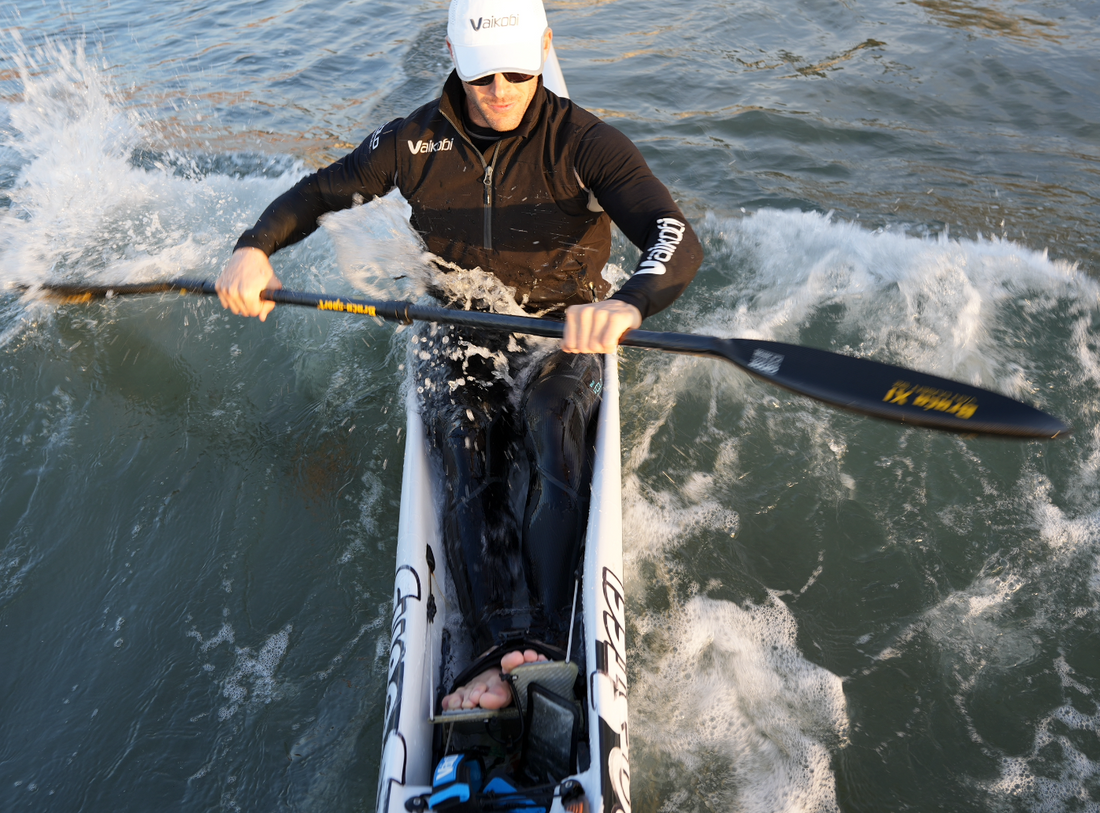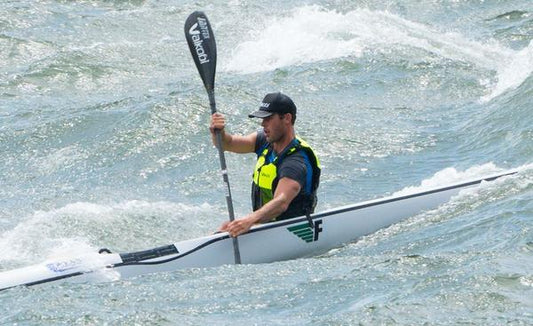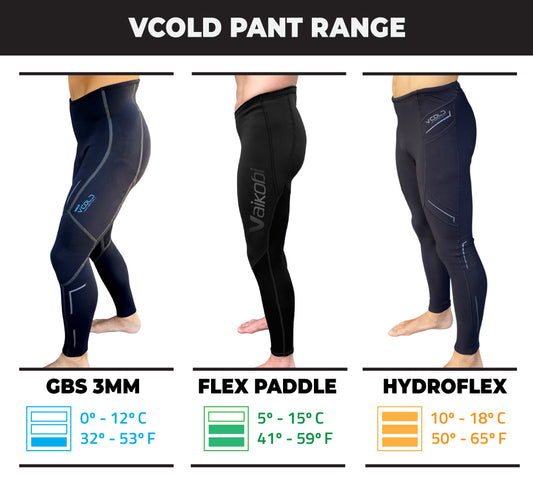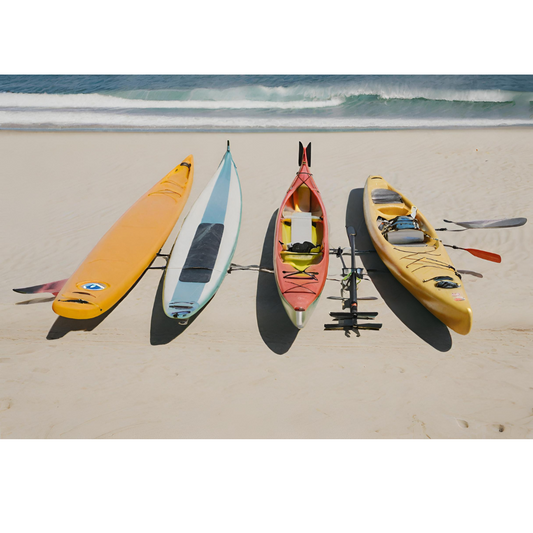If you’re a paddling enthusiast, chances are cold weather won’t stop you from enjoying on-water adventures. And it shouldn't! However, you need to be aware that cold water immersion could be life threatening in seconds! Many good swimmers unfortunately drown in this scenario because the cold shock can make them unable to move.
That’s why wearing the right cold water gear is essential in case of capsizing, so prepare it as part of your paddling survival kit and you’ll be ready for whatever nature throws at you.
In this article you’ll find all the info you need to safely get ready for your cold water kayaking sessions: tips, gear and safety rules.
We have you covered so that you can keep paddle boarding in cold water in safety and comfort, protected by the elements, no matter the conditions.
What exactly is considered Cold Water?
Cold water safety experts recommend wearing thermal protection below 70F (21C), considering 50-60F (10-15.5C) as the maximum intensity cold shock range. The temperatures are surprisingly high to be considered risky. You wouldn’t think that going for a paddling session on 50F (10C) you would risk your life, right? Wrong! As the US National Center for Cold Water Safety mentions: “There's a huge difference between the way cold air and cold water feel. For example, 45F (7C) air feels cold, but 45F (7C) water feels like it's burning your skin. Water has much greater density than air, it immediately destroys most of the insulation provided by your clothing, and it also conducts heat away from your body much faster than air” And that’s exactly the reason most paddlers are not aware of the risks of cold water immersion. “It's a very easy mistake to make, and it gets a lot of people killed each year, not because of hypothermia or incapacitation, but rather because of cold shock and swimming failure. Many people also drown within a couple of minutes because their arms become too cold to continue swimming and they aren't wearing a lifejacket.”
So, now that you are aware of the cold water paddle boarding risks, let’s see how you can prepare your body for the eventuality of winding up in cold water.
After analyzing real life fatal or close call incidents, the same center for cold water safety come up with 5 Golden Rules:
Golden Rules for Cold Water Safety Paddling:
- Always wear your PFD
- Always dress for the water temperature - no exceptions
- Field-test your gear
- Swim-test your gear every time you go out
- Imagine the worst that can happen and plan for it
What to wear when paddle boarding in cold weather
The right cold water paddling gear eliminates cold shock and delays physical incapacitation and hypothermia, so you’ll be bulletproof even in the worst case scenario of immersion in the freezing water.
Let’s get you geared up for epic water paddling adventures in the cold season.
Your best bet for paddle boarding in cold water is wearing a wetsuit or neoprene paddlewear, designed for cold conditions.
The thickness of the wetsuits and neoprene products determines their efficiency in insulation, which means the thicker the wetsuit the better protection you’ll get in case of cold shock. You can choose from Vaikobi’s FLEXFORCE collection full body wetsuits, Long John and wetsuit tops & pants in the range of 1.5mm - 4 mm thickness. You’ll get ultimate warmth and freedom of movement wearing Vaikobi’s wetsuits, specially designed for paddle boarding in cold water.
Make sure you field test it and swim test it before you go on your expeditions, so that you know you’ll get enough protection for the water temperature you’ll paddle. Also, practice capsizing and getting back in your kayak in a safe environment.
Keeping your hands warm is crucial in case of cold water immersion. If your hands are numb, you won’t be able to use a paddle or your cell phone to call for rescue. This is an easy issue to solve: wearing watersports gloves will protect your hands from elements while paddling and most importantly, will keep you safe in case of capsizing.
Check out Vaikobi V Grip Pro Gloves, available both in full finger and short finger options. The gloves feature double layers of reinforcement on the palm for abrasion resistance and protection and a single layer on the finger tips for dexterity, offering you the best protection for cold winter paddling.
It’s important to keep your feet warm during your winter paddling sessions. The obvious choice is wearing neoprene watersports shoes. You can opt for high-top, over-the-ankle types and low-top shoes, depending on the level of support and structure you are looking for. Choose from two Vaikobi’s range of boots: Speed-Grip and Speed-Grip FLEX boots. You’ll get a barefoot-style feel wearing Speed Grip Flex boots, and more structure wearing Speed-Grip boots.
Find info on how to choose your paddling boots, taking in consideration their cut, the feel of the boots and the best use for each range and model.
Cold weather paddling apparel layering guide
When paddling in changing cold weather conditions, layering allows you to adapt to the temperatures. You can easily add or remove layers during a session, so that you’ll always feel comfortable and protected from the elements.
As a rule of thumb, all the gear shouldn’t retain water in case it gets wet. This is the reason you should avoid cotton and go for synthetic fabrics that allow moisture to evaporate quickly.
Choose a thin base layer (the one closest to your skin) like wetsuit or neoprene paddlewear that fits snugly. You shouldn’t wear any other clothing under the wetsuit, otherwise you risk compromising the insulation it provides, allowing cold water to get to your skin.
For the second layer, go for non absorbing materials that maintain body temperature but feel light and don’t restrict your movement. Vaikobi VCOLD Thermal Wear Collection is specially designed to keep you comfy during those cold winter paddling sessions. Here you can find all the info you need about VCold thermal gear.
The third layer, where you could use a lightweight jacket, keeps you protected from rain, spray, wind or sun. Keep in mind though, that a paddling jacket is not efficient in case of cold water immersion, because it is not watertight, so the water will flood in.
Check out our complete guide on layering, here.
Now you’re ready to take on your paddling sessions, prepared for extreme cold conditions. Vaikobi, leading provider in paddling gear is your best choice when it comes to keeping you safe, protected and comfy when paddle boarding in cold water.
Stay Safe, Have fun and Enjoy the ride!





